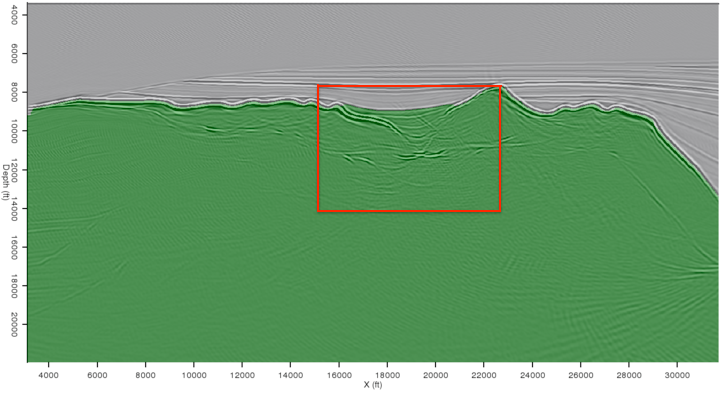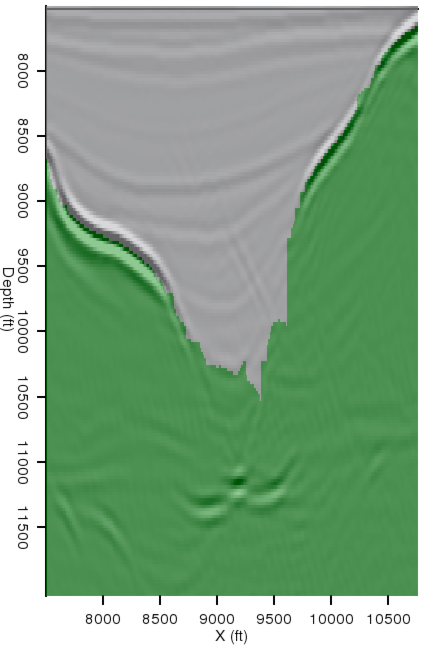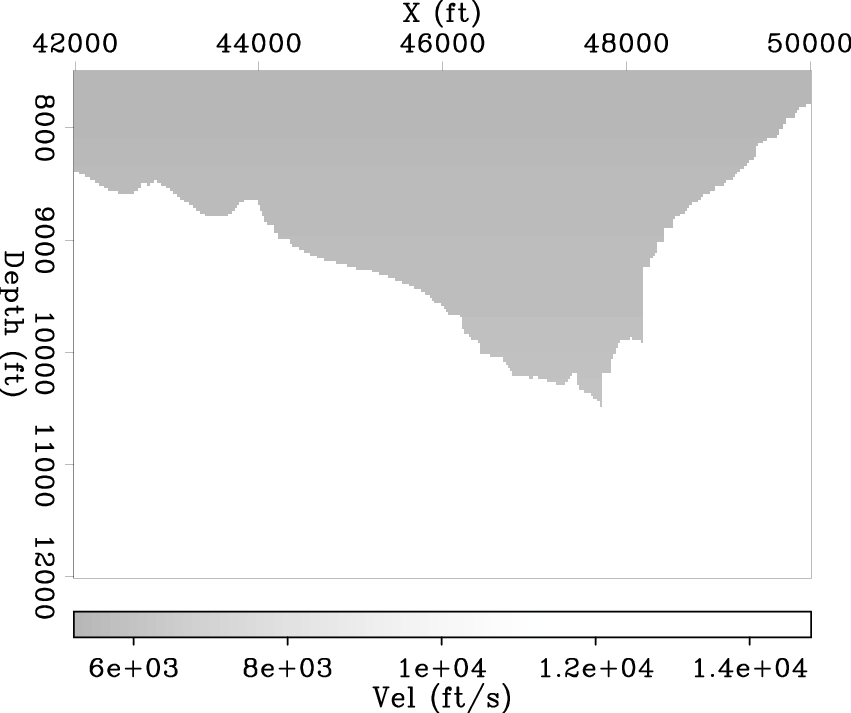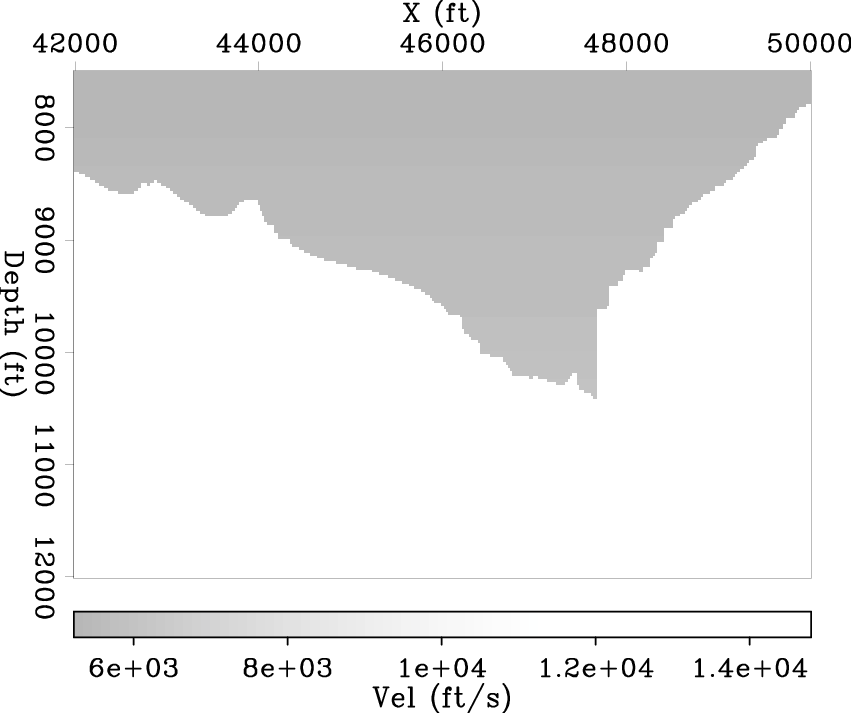|
|
|
|
Model-building with image segmentation and fast image updates |


|
|---|
|
zig-sfimg,zig-largesfseg2
Figure 2. Sediment-flood migration (a), and corresponding segmentation result (b). The segmentation algorithm performs poorly within the area indicated on (b). |
|
|
Since the major source of inaccuracy in the Figure 2(b) result is within the salt canyon indicated on the figure, we can restrict our analysis to that region. By setting a smaller minimum segment size, the user can be much more selective about what regions to include as salt. Figures 3(a) and 3(b) display two possible salt interpretations generated by the automatic PRC algorithm for the region in question. In Figure 3(b), an extra segment (indicated by the arrow) has been included in the salt. By replacing segments interpreted as salt with salt velocities on the original sediment flood velocity model, two different velocity models can also be created (Figures 4(a) and 4(b)).


|
|---|
|
zig-canyonseg1,zig-canyonseg2a
Figure 3. Two possible salt interpretations provided by the segmentation algorithm. In (b), an extra segment (indicated by the arrow) has been included in the salt. |
|
|


|
|---|
|
velstitch1,velstitch2
Figure 4. Salt-flood velocity models corresponding to the interpretations in Figures 3(a) and 3(b). The models were created from a sediment-flood velocity model by assigning salt velocities below the interpreted salt boundary. |
|
|
|
|
|
|
Model-building with image segmentation and fast image updates |